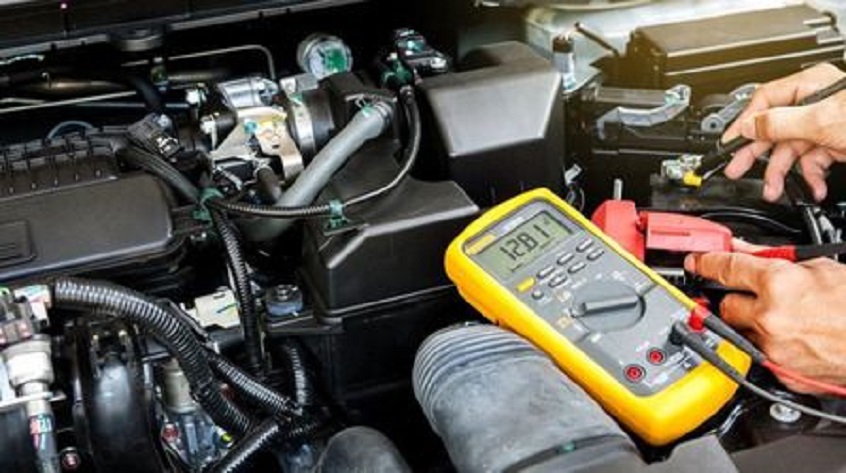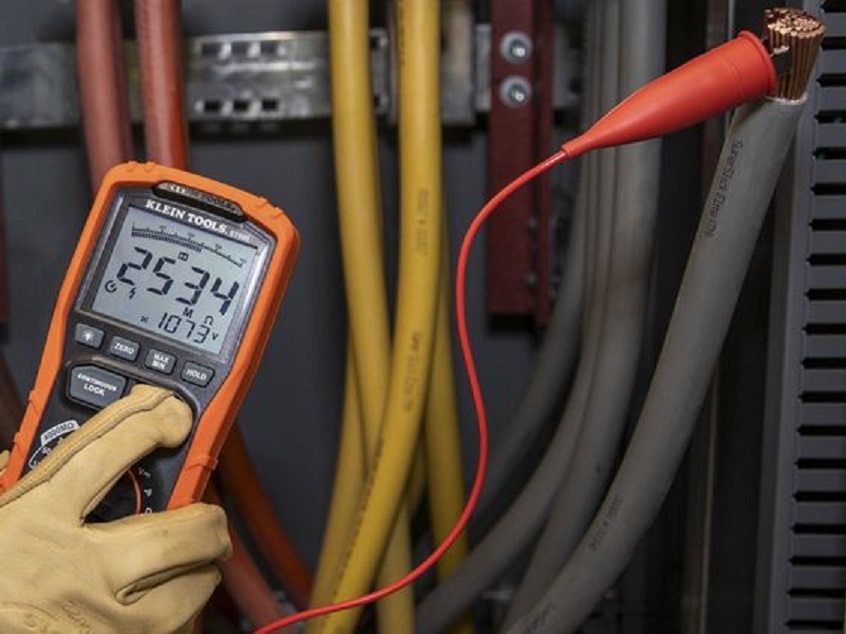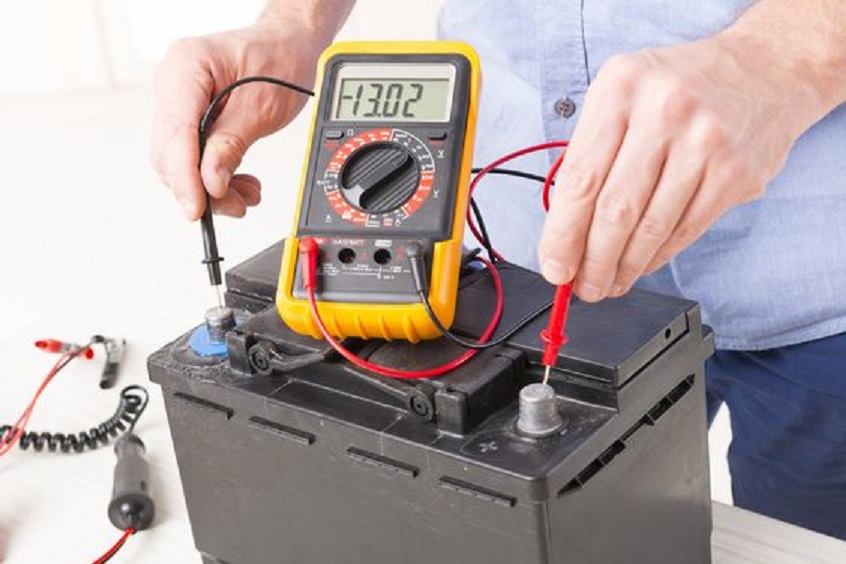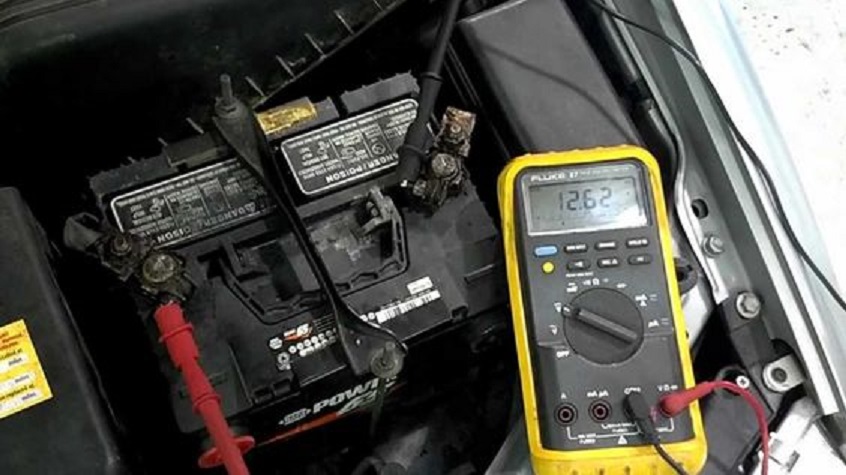
The Whats and Hows of Resistance Testers
Insulation has an important role in electrical systems, from basic wires and cables to more complex and high-power components, such as industrial machinery, motors, and transformers. It is tasked with resisting current and keeping it on its designated path through the metal conductor. In simple terms, it prevents electricity from leaking, while also shielding conductors from environmental factors, such as water and heat.
Damage to insulation can lead to a variety of unwanted issues, from dim or flickering lights, damage to expensive appliances and machines, or electrical faults, such as short circuits or electrical fires. But the main reason you’d want insulation in top condition is to minimise the risk of electrocution and burns.
Assessing the quality of the insulation in cables, appliances, installation, machinery, and more is done with thorough testing using a resistance tester. This passes a defined voltage through the insulation to measure the resistance. Higher values, usually in mega or gigaohms, indicate that it is in good condition and won’t pose safety risks. Lower values, often point to insulation that is fraying, cracked, or more severely damaged and something that can mean expensive repair costs or serious injury.
Contents
Basics of Resistance Testing

Insulation starts to degrade from the day it’s made. Different factors are at play. The insulation in cabling, windings, motors, switchgear, transformers, and more can fail due to electrical stresses, such as overvoltage, mechanical damage and impact, vibrations, temperature extremes, contamination, exposure to chemicals, moisture, and humidity. These can work alone or together to reduce insulation quality gradually or quickly, depending on the circumstances.
How It’s Done
To check whether the insulation is holding up and doesn’t leak current, an insulation resistance test is conducted. An insulation resistance tester generates a stabilised high-voltage DC current and this is passed between two points separated by a dielectric or insulation. The tester measures the amount of current flowing through the dielectric and calculates the resistance to that current using Ohm’s Law.
The voltage settings can be modified depending on what’s being tested. For instance, low voltage is used in testing residential cabling or household appliances, whereas higher voltages, over 15kV, are used in industrial machinery and motors.
What’s the Purpose of Insulation Resistance Testing?

No insulation is perfect, and there will be some current loss. The amount of leaking current can be dangerous and it is the job of the insulation resistance tester to determine whether this is a potential risk. Tests are conducted when electrical equipment is produced to ensure it works as it should, when installing new machinery or electrical cabling, and to determine whether there are any hazards in current installations and equipment. By performing the test, operators will get a picture of the dependability of electrical equipment, its condition, and the service life of the insulation.
The ultimate aim is to prevent serious injuries, such as electric shocks, burns, electrical fires, and costly damage to equipment and machinery. An insulation resistance test, then, should be conducted on a regular schedule to meet safety and compliance requirements and ensure employee safety, as well as minimise unwanted expenses or downtime due to deteriorating insulation or equipment failure.
Types of Resistance Testers
Electrical insulation testers come in different types and at different price points. Analog testers are the traditional type and display resistance readings on an analog scale. While they are reliable and easy to use, they are not as accurate as digital testers. These present readings on a digital display, and a generally regarded as very precise. Megohmmeters or meggers are a popular type of insulation resistance tester used for measuring lower resistance values such as those found in residential control panels, switches, and wiring. Automated and programmable testers are computer controlled and can conduct a variety of tests within a scheduled timeframe. They provide accurate data and can test dozens of pieces of electrical equipment in a single go.
Most testers though are smaller, handheld units, either analog or digital, and generate a sufficient testing voltage from a built-in battery. They are proven pieces of testing gear, benefiting by being portable, reliable, and inexpensive. Where more voltage is needed, such as when testing high-power industrial motors, opt for a benchtop variant.
Insulation Test Types and Making Sense of Readings

There are three types of tests a resistance tester can do: a spot-reading test, a time-resistance method, and the dielectric absorption ratio. The spot-reading or short test is conducted within 60 seconds and provides a generally accurate assessment of the condition of the equipment and wiring tested. Results are affected by external factors like humidity and temperature, but for general-purpose use, they are more than adequate.
Time-resistance tests are done at set intervals and by comparing the results. This takes into account the absorption current that is absorbed by the insulation during the test, with each subsequent test increasing the applied voltage. This kind of test is done as a preventative maintenance measure, mostly in industrial settings.
Lastly, the dielectric absorption ratio is the ratio of two time-resistance tests and is used to determine readings at both 60 and 30-second intervals and establish whether the insulation is in good condition or deteriorating.
Appliances, motors, switchgear, wiring and any tested electrical equipment will pass an insulation resistance test if the readings are at or exceed are set resistance value. The rule of thumb is one megohm for every 1000 Volts of operating voltage, with a minimum value of one megohm. For instance, a 2400V motor should display a minimum reading of 2.4 megaohms or more to be deemed safe and in good condition.

